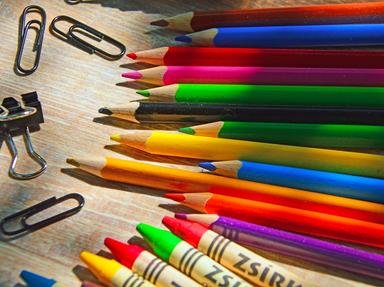Quiz Answer Key and Fun Facts
1. Where, in 1662, were the first mass-produced pencils made - in a city where war criminals would be on trial nearly 300 years later?
2. Pencils were advertised for sale during the 1730s in 'The Pennsylvania Gazette'. Who was the American patriotic author and printer who owned the Gazette, and who also wrote 'Poor Richard's Almanack'?
3. The first-recorded mechanical 'propelling' pencil was found aboard the wreckage of the British ship 'HMS Pandora', which sank in the Torres Strait off the Australian coast in 1791. Which ship, seized by mutineers after leaving Tahiti, had 'Pandora' been sent in pursuit of?
4. In 1828, Frenchman Bernard Lassimone was the first to patent which gadget to improve the performance of the humble pencil?
5. While pencils made in Europe usually do not have erasers attached, the eraser-tipped pencil is common in America. What is the term used for these erasers during the manufacturing process?
6. At the time of his death in 1959, this architect - described as "the greatest American architect of all time" - had 87 pencils on his working desk. Who was this pioneer of the 'Prairie' style of building, who also designed New York's Guggenheim museum?
7. The biggest pencil in the world (as at 2010) is 76 feet long and weighs nearly 22,000lbs. In which city - named after a king of France - is this graphite monster on display?
8. An estimated 14 billion pencils are produced each year, enough to circle the Earth 62 times. Which country produces most of these?
9. Which author of 'East of Eden' and 'Travels with Charley' used up to 60 pencils a day, and was in constant search of the 'perfect' pencil?
10. And finally ... apart from writing great novels, which of these uses could you put pencils to?
Source: Author
dsimpy
This quiz was reviewed by FunTrivia editor
Exit10 before going online.
Any errors found in FunTrivia content are routinely corrected through our feedback system.
